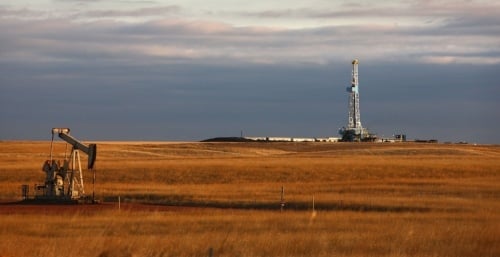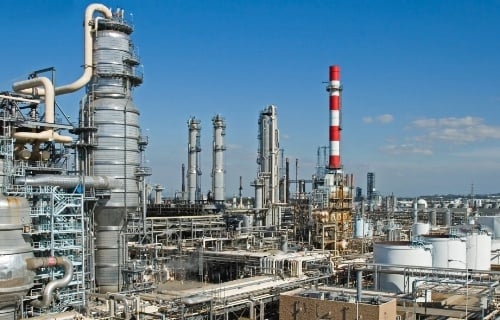1 min read
The Fundamentals of Oil & Gas Hedging - Updated
While the basic fundamentals of energy hedging and risk management don't change very often, the prices at which one can hedge clearly do. As such,...

This post is the third in a series where we are exploring how oil and gas producers can hedge their exposure to crude oil, natural gas and NGL prices. The first two posts explored how oil and gas producers can hedge with futures (The Fundamentals of Oil & Gas Hedging - Futures) and swaps (The Fundamentals of Oil & Gas Hedging - Swaps), while this post will focus on how oil and gas producers can hedge with a strategy known as a put option. In subsequent posts we'll explore how oil and gas producers can hedge with costless collars and other advanced strategies.
In the commodity markets, an option is contract which provides the buyer of the contract the right, but not the obligation, to purchase or sell a specific volume of a specific commodity (such as crude oil or natural gas), or the financial equivalent of said commodity, on or before a specific date or period of time.
There are two primary types of options, call options (which are often referred to as a ceilings or caps) and put options (which are often referred to as floors). A call option provides the buyer of the option with a hedge against potentially rising prices while a put option provides the buyer of the option with a hedge against potentially declining prices.
Many oil and gas producers hedge with put options as doing so allows them to mitigate their exposure to declining crude oil, natural gas and/or NGL prices while retaining the ability to benefit from potentially higher prices. Similarly, many consumers hedge with call options as call options allow them to minimize the impact of potentially rising prices while retaining the ability to benefit from potentially lower prices.
As an example of how an oil and gas producer can hedge their commodity price exposure with put options, let’s assume that you are a crude oil producer and that you need to hedge your exposure to potentially lower crude oil prices to ensure that you can service your debt, as required by your lender. More specifically, let’s assume that you need to ensure that you are hedged at no less than $40/BBL. For the sake of simplicity, let’s also assume for this example that you are focused on hedging your September production. Clearly in practice you would hedge many months of production, not only a single month.
In to do accomplish this you could purchase a $45 September Brent crude oil put option. As this is being written, a $45 September Brent crude oil average price (also known as an APO or Asian) put option is trading for a premium of $1.91/BBL, which would mean that your of pocket cost for hedging 1,000 BBLs with this strategy would be $1,910 (1,000 BBLs X $1,910/BBL).

Now let's analyze how the September $45.00 Brent crude oil put option will impact your business, and ensure that you are able to service your debt, if the average of the prompt month Brent crude oil futures during the production month of September settles both above and below your strike price of $45.00/BBL. As we noted our last post, crude oil futures expire before the production (delivery) month. In the case of the September production month, the prompt month Brent futures contract is the November futures contract.
In the first outcome, let's assume that average settlement price for the prompt Brent crude oil futures, for each business day in September, is $60.00/BBL. In this case, the actual price that you realize at the wellhead should be approximately $60.00/BBL, excluding basis, gathering and transportation fees. However, because you hedged with a $45.00 put option, your hedge would be "out-of-the-money" and you would incur neither a gain nor loss on the $45.00 put option. Recall that you had to pay $1.91/BBL for the option, so your actual net, including the option premium, would be $/BBL (this excludes basis, gathering and transportation fees as well). Clearly, this would be a pleasant surprise as $58.09/BBL would not only allow you to service your debt but to generate a nice profit as well.
In the second outcome, let's assume that average settlement price for the prompt Brent crude oil futures, for each business day in September, is $35.00/BBL. In this scenario, the actual price that you realize at the wellhead should be approximately $35.00/BBL. However, because you hedged with a $45.00 put option, your hedge would be "in-the-money" and you would incur a hedging gain of $10/BBL. In addition, you had to pay $1.91/BBL for the option, so your actual net, including the option premium, would be $43.09/BBL (again, this excludes basis, gathering and transportation fees). While not nearly as ideal as the first scenario, a net of $43.09/BBL would indeed allow you to ensure that you can service your debt, and hopefully pay your investors a small dividend as well.
The above chart shows the potential outcomes of a crude oil producer hedging with a $45.00 Brent crude oil put option, as described in the example. As the chart indicates when Brent crude oil prices average $45/BBL or less, your net price including the option premium of $1.91/BBL, is 43.09/BBL. Conversely, when Brent crude oil prices average more than $45/BBL, your net price is the Brent monthly average minus the option premium of $1.91/BBL.
As this example indicates, hedging with put options provides oil and gas producers with the best of both worlds as put options provide a hedge against potentially declining crude oil (as well as natural gas and natural gas liquids) prices while allowing the producer to potentially benefit from higher prices as well.
This post is the third in a series on hedging crude oil and natural gas production. The previous and subsequent posts in the series can be accessed via the following links:
The Fundamentals of Oil & Gas Hedging - Futures
The Fundamentals of Oil & Gas Hedging - Swaps
The Fundamentals of Oil & Gas Hedging - Costless Collars
Editor’s Note: The post was originally published in February 2013 and has been updated to better reflect current market conditions.

1 min read
While the basic fundamentals of energy hedging and risk management don't change very often, the prices at which one can hedge clearly do. As such,...

3 min read
In the previous post in this series, The Fundamentals of Oil & Gas Hedging with Futures, we explored how an oil and gas producer can hedge their...

2 min read
As a result of rising geopolitical tensions across the world – with many countries also facing key elections in the coming months- and fundamentals...